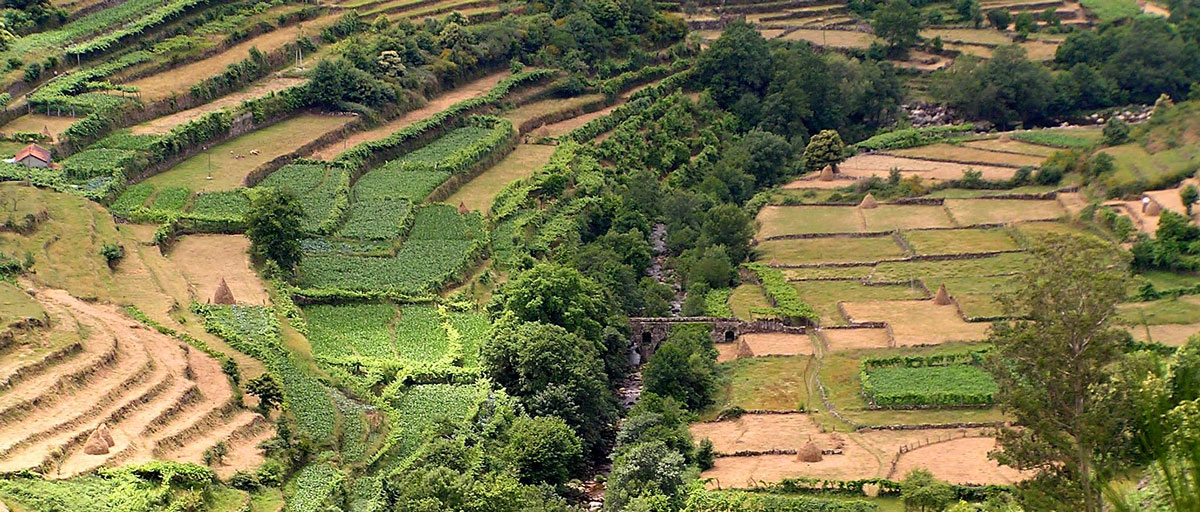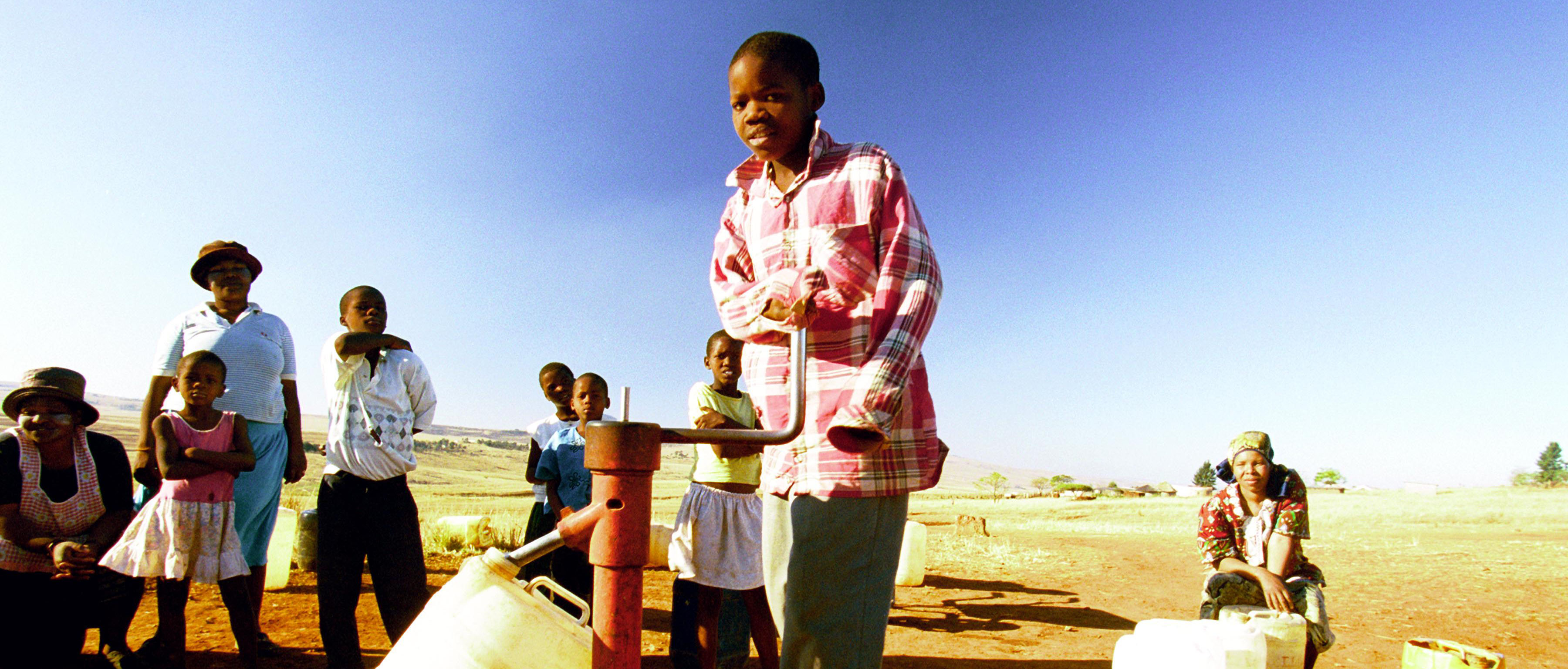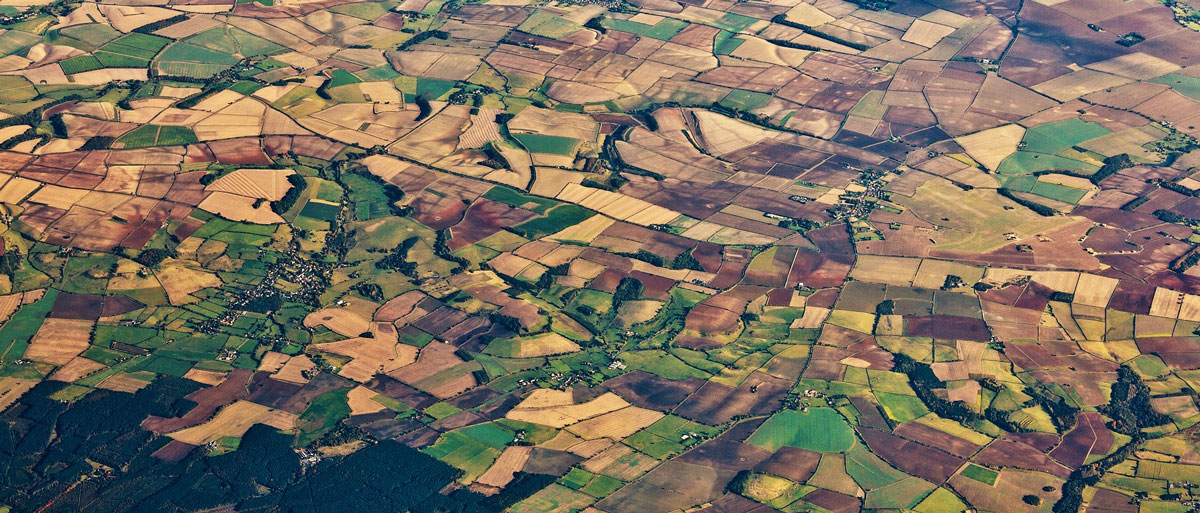
Compared to monocultural landscapes, multifunctional landscapes provide a wider range of services that are also accessible to a broader range of beneficiaries. Photo: C. Queiroz
Bildtext får vara max två rader text. Hela texten ska högerjusteras om den bara ska innehålla fotobyline! Photo: B. Christensen/Azote
AGRICULTURE AND FOOD
A little bit of everything might be just what the world needs
Multifunctional landscapes can counter equity problems connected to agricultural intensification
- Vast majority of food-insecure people are constrained by limited access to the abundance of food being produced
- Optimizing landscapes for more efficient production can give rise to several negative ecological and social consequences
- In multifunctional landscapes, a more diverse set of ecosystem services is accessible to a broader range of beneficiaries
The intention is good and the logic behind sustainable intensification cannot be dismissed altogether. However, it is no panacea for reducing hunger and providing for the world's burgeoning population. Sorry.
In a guest editorial published in Frontiers in Ecology and the Environment, centre researchers Megan Meacham and Cibele Queiroz together with Joern Fischer from Leuphana University, Germany, argue that while a more efficient food production is necessary, we forget that the vast majority of food-insecure people are constrained by limited access to the abundance of food being produced.
Part of the problem, they argue, is the focus on monocultural landscapes, or areas optimised for agricultural production but little else. Their work is a product of an extended research collaboration under Programme on Ecosystem Change and Society (PECS), a project jointly sponsored by ICSU and UNESCO that integrates research on the stewardship of social–ecological systems.
Optimizing landscapes for more efficient production without carefully considering the potential side effects can give rise to several negative ecological and social consequences
Joern Fischer, lead author
Enter the controversial subject of multifunctional landscapes. The idea of favoring landscapes that meet diverse human needs, while also facilitating ecosystem functions, contrast starkly with monofunctional landscapes. Critics argue that landscapes can be optimized for a certain activity, crop, or service, achieving their full potential – but at what cost and to whose benefit? Management strategies focusing on the optimization of particular services often exacerbate trade-offs between these and other ecosystem services in the landscape. This can have serious ecological and social consequences.
Ignoring the social dimension
In their article, Fischer, Meacham and Queiroz argues that there is a social dimension to landscape multifunctionality that has been ignored. Not only do multifunctional landscapes provide a wider range of services, they are also accessible to a broader range of beneficiaries. Furthermore, the benefits flowing from ecosystem services are usually experienced more locally, and local people are more likely to be in charge of landscape management.
They use the example of southern Transylvania in Romania where important ecosystem services include not only healthy soils, clean drinking water, firewood, and crops for local markets, but also ”scenic beauty and sense of place.”
”Most of these services directly benefit local people,” they explain.
”Firewood and drinking water, for instance, are essential goods for many households. Many local people are also closely connected to the natural environment, because they engage in semi-subsistence farming (sometimes in addition to other work), have large vegetable gardens, or obtain much of their food from local sources.”
The result is that local ownership is strong and outside involvement remains limited, although the influences of joining the EU are becoming more noticeable.
The example from Romania presents a stark contrast to the situation in the American Midwest where several monofunctional landscapes are optimized for crop production. Over the past two decades, biofuel projects were promoted in the region claiming that they would provide employment, help reverse rural depopulation, and generate biofuel.
However, findings from six communities in rural Kansas and Iowa highlight how the benefits of biofuel production to local livelihoods have been minimal. Instead, depopulation has continued and several cases of environmental degradation, including reduced water quality, have been reported.
More not always better
Of course, the authors argue, not all landscapes need to be multifunctional. But the growing obsession with increasing the efficiency of agricultural landscapes needs to be seriously questioned for social as well as ecological reasons, they say.
"Producing crops is a means to an end. Meaningful ends in their own right – such as human well-being, equity, sustainability, or biodiversity – must not be compromised by subscribing to a rhetoric that blindly asserts that more is always better. Oftentimes, a little bit of everything might be just what the world needs," the authors conclude.
Fischer, J., Meacham, M., Queiroz, C. 2017. A plea for multifunctional landscapes. Frontiers in Ecology and the Environment.10.1002/fee.1464
Megan Meacham is a PhD student studying the social-ecological process that provides for the reliable production ecosystem services.
Cibele Queiroz focuses mainly on ecosystem services and biodiversity in landscapes currently under land-use change









